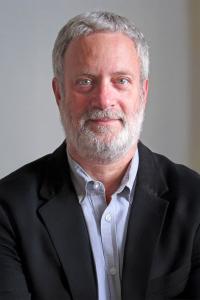Overview
Academic Appointments
- Professor of Molecular Pharmacology and Therapeutics
- Gerald D Fischbach, MD Professor of Neuroscience
Administrative Titles
- Chair, Department of Neuroscience
Gender
- Male
Credentials & Experience
Education & Training
- PhD, 1978 Pharmacology, Yale University
Committees, Societies, Councils
- 2015: Fellow, American Association for the Advancement of Science
- 2012: Member, National Academy of Medicine
- 2012: Member, American Academy of Arts and Sciences
Honors & Awards
- Alfred P. Sloan Research Fellowship
- Irma T. Hirschl Career Scientist Award
- Herbert J. Kayden Award of the New York Academy of Sciences in Biomedical Science
- Fellow of the American Academy of Arts and Sciences
- Member of the Institute of Medicine
- Howard Hughes Medical Institute: Alumni
Research
Dr. Siegelbaum is leading efforts to understand how electrical signals in the brain encode memories that can last a lifetime, and how changes to these signals play a role in psychiatric disorders.
Dr. Siegelbaum's team is interested in the molecular and cellular mechanisms underlying electrical signaling and synaptic transmission in the nervous system, and how these electrical signals give rise to complex behaviors. We focus on how ion channels and synaptic transmission regulate information flow in the cortico-hippocampal circuit, which plays a critical role in learning and memory.
One area of research explores the role of the hyperpolarization-activated cation channels (the HCN channels) in regulating dendritic integration of excitatory and inhibitory synaptic inputs. We found that genetic deletion of the HCN1 channel from hippocampus enhances synaptic excitation, the induction of long-term plasticity and, surprisingly, spatial learning and memory. As these channels have also been implicated in various neurological and psychiatric diseases, we are now examining the molecular mechanisms that regulate HCN1 channel expression and trafficking in both normal and disease states.
A second project examines the role of the CA2 subregion of the hippocampus, an area first identified in 1934 but which has received little attention over the past 80 years. We have developed a mouse like that enables us to selectively inactivate CA2, which we find produces a very specific deficit in the encoding of social memory, the ability of an animal to recognize and remember a conspecific. We are now examining the CA2 neural circuitry in more detail to determine how this region participates in memory encoding. As data from individuals with schizophrenia and autism spectrum disorders suggest the presence of alterations in the CA2 region, we are using mouse models of neuropsychiatric disease to explore the possible role of altered CA2 function in the social endophenotypes of these disorders.
Research Interests
- Biophysics
- Ion Channels
- Models of Psychiatric Disorders
- Molecular Studies of Ion Channel Structure and Function
- Neurobiology of Learning and Memory
- Synapses and Circuits
- Synaptic Transmission and Plasticity in the Mammalian Brain
Selected Publications
- Sun Q, Srinivas KV, Sotayo A, Siegelbaum SA. (2014). Dendritic Na(+) spikes enable cortical input to drive action potential output from hippocampal CA2 pyramidal neurons. Elife. 2014 Nov 12;3. doi: 10.7554/eLife.04551.
- Lei YT, Thuault SJ, Launay P, Margolskee RF, Kandel ER, Siegelbaum SA. (2014). Differential contribution of TRPM4 and TRPM5 nonselective cation channels to the slow afterdepolarization in mouse prefrontal cortex neurons. Front Cell Neurosci. 2014 Sep 4;8:267. doi: 10.3389/fncel.2014.00267.
- Kupferman JV, Basu J, Russo MJ, Guevarra J, Cheung SK, Siegelbaum SA. (2014). Reelin signaling specifies the molecular identity of the pyramidal neuron distal dendritic compartment. Cell. 158:1335-1347.
- Hitti FL, Siegelbaum SA. (2014). The hippocampal CA2 region is essential for social memory. Nature. 508:88-92.
- Hu, L., Santoro, B. Saponaro, A., Liu, H., Moroni, A., Siegelbaum, S. (2013). Binding of the auxiliary subunit TRIP8b to HCN channels shifts the mode of action of cAMP. J. Gen. Physiol. 142:599-612.
- Basu, J., Srinivas, K.V., Cheung, S.K., Taniguchi, H., Huang, Z.J., and Siegelbaum, S.A. (2013). A cortico-hippocampal learning rule shapes inhibitory microcircuit activity to enhance hippocampal information flow. Neuron 79:1208-1221.
- Thuault, S.J., Malleret, G., Constantinople, C., Nicholls, R., Chen, I., Zhu, J. Panteleyev, A., Vronskaya, S., Nolan, M.F., Bruno, R., Siegelbaum, S.A. and Kandel, E.R. (2013). Prefrontal cortex HCN1 channels enable intrinsic persistent neural firing and executive memory function. J Neurosci. 33:13583-13599.
- Hussaini, S.A., Kempadoo, K.A., Thuault, S.J., Siegelbaum, S.A. and Kandel, E.R. (2011). Increased size and stability of CA1 and CA3 place fields in HCN1 knockout mice. Neuron 72:643-653.
- Piskorowski R, Santoro B, Siegelbaum SA. (2011). TRIP8b Splice Forms Act in Concert to Regulate the Localization and Expression of HCN1 Channels in CA1 Pyramidal Neurons. Neuron 70:495-509.
- Chevaleyre V, Siegelbaum SA. Strong CA2 pyramidal neuron synapses define a powerful disynaptic cortico-hippocampal loop. Neuron. 2010 May 27;66(4):560-72. doi: 10.1016/j.neuron.2010.04.013. PMID: 20510860; PMCID: PMC2905041.
- Ahmed MS, Siegelbaum SA. Recruitment of N-Type Ca(2+) channels during LTP enhances low release efficacy of hippocampal CA1 perforant path synapses. Neuron. 2009 Aug 13;63(3):372-85. doi: 10.1016/j.neuron.2009.07.013. PMID: 19679076; PMCID: PMC2746441.
- Dudman, J.T., Tsay, D. and Siegelbaum, S.A. (2007). A role for synaptic inputs at distal dendrites: instructive signals for hippocampal long-term plasticity. Neuron 56, 866-879.
For a complete list of publications, please visit PubMed.gov
